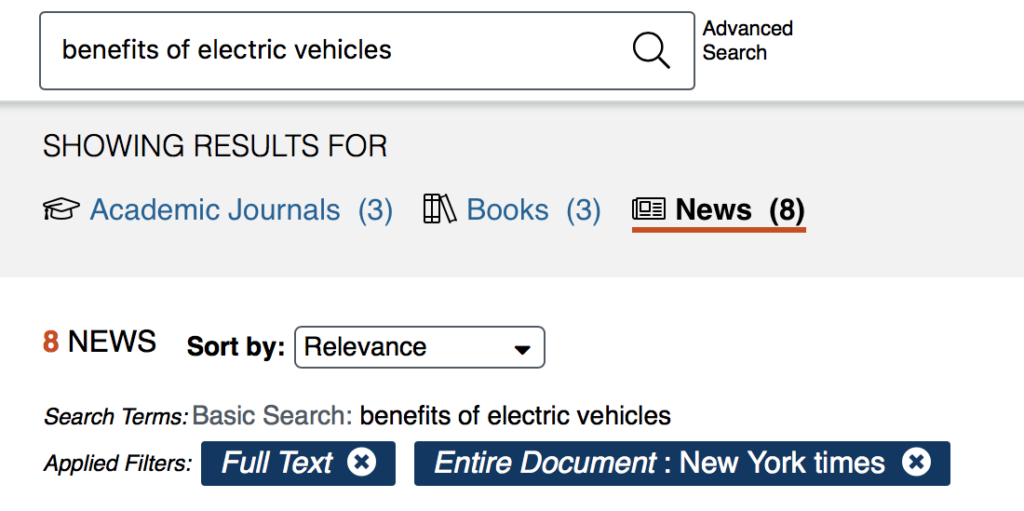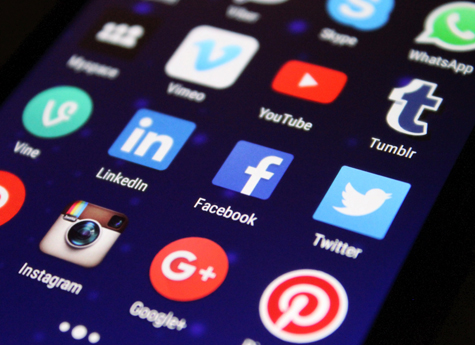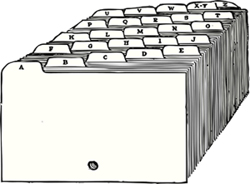28 Search
Karolyn Zuccarelli
Learn to navigate the ocean of data to find the information and types of sources you need.
What You’ll Learn:
- How to locate sources in different places
- The difference between primary and secondary sources
- How the information cycle works

Think about the research you might conduct when buying a new laptop for school. Some research questions you might consider include:
- What is the best laptop for students?
- What laptop companies offer student discounts?
- What is the difference between a Mac and a Chromebook?
- What laptop has the best warranty?
Now think about how you will go about getting answers to these questions. Some approaches to searching for information could include:
- A Google search
- Consumer reports
- Asking a friend
- Going to a store and asking an expert
- Going to the library bookstore (if they sell laptops)
Consider: What are the strengths and limitations of the information you will receive from each of these sources?
No matter what you are researching, consulting multiple sources of information, and being aware of which offers the most useful information for your purpose, is a key step of the research process.
Locating Information Using Search Engines and Databases

Once you have planned and mapped out your ideas, you can use your focused research question and keywords to search for supporting evidence.
When we need information, many of us start with a Google search. Searches on Google will often produce first hits from crowdsourced publications like Wikipedia or blogs. You are also likely to find corporate material or paid company advertisements at the top of your search results. For these reasons, you may want to expand your search to other search engines and databases.
Google Scholar is a search engine for scholarly work. However, usually only excerpts from the academic works are given. Access to the full text is often restricted and requires a paid subscription.
The library database offers the greatest variety of credible and accessible resources. It provides full-text access to most academic and professional journals, newspapers, and books. You will learn more about how to evaluate credibility of sources in the Assess subtopic.
View this source for an overview of library resources at Centennial College.
Let’s now use a series of search terms and see what comes up in different search engines. From there, we can compare and contrast the results.
Scenario: You have been tasked to write an essay on the broad topic of green energy. After doing some planning and brainstorming, you’ve narrowed the scope of the topic to “the benefits of electric vehicles.” The keywords you will use when searching for information are: benefits of electric vehicles. You are required to have three sources in your essay. You decide to search for information in three places: Google, YouTube, and the Centennial College library database. The following is a breakdown of your search results.

The first search result on Google is a sponsored advertisement for the company Electric Go.
Some key characteristics of the search result include:
- It is a non-profit organization dedicated to building awareness of the benefits of electric vehicles.
- The organization is Canadian.
- It has sponsorships from government agencies.
- On the website, there is general information on electric vehicles, but no links to sources or references are provided.

The third search result comes from the library database. You use your keyword search with an additional filter for “New York Times” news articles only.
Some key characteristics of the search result include:
- There are eight news articles on the topic of the benefits of electric vehicles.
- All of the news articles are published in The New York Times.
- The full text of each article is available.

The first of the eight search results is titled “The Electric Car Revolution” (2017). Read the source. Some of the key characteristics of the source include:
- There are hyperlinks included within the article to additional credible information related to your keyword search.
- The article references research from Bloomberg New Energy Finance and International Energy Agency.
- There is an explore area with links to additional credible articles on your topic.
Primary and Secondary Resources
Before we look at the differences between primary and secondary resources, view this source from The Learning Portal and Conestoga College (2016) on the types of resources available to you and why using different sources is beneficial for your work.
Please answer the following questions on the types of resources:
Primary Resources
According to the Purdue Online Writing Lab (2020), “primary research is any type of research that you collect yourself. Examples include surveys, interviews, observations, and ethnographic research” (para. 1). The observations made through primary research document first-hand observations of an issue, idea, or event.
View this source from the University of Guelph (2019) for more information on primary research.
The Information Cycle

The information cycle outlines how information about a particular event or issue is created and cycles through various media outlets. It informs which information we consume, and when and how we consume it.
For example, information often arrives on our radar through social media, Wikipedia, and news channels. Later on, it is analyzed in academic journals and reports (Thompson Rivers University Library, 2020).
Watch this source on the information cycle from John M. Pfau Library (2016).
Please answer the following questions about the information cycle:
Organizing and Documenting Research—Stage 2

So far, you’ve been keeping a Word document open with source links and a brief description of the source. You can also email yourself promising sources you find through the library database. File these so you can refer back to them when writing.
Some sources will be more relevant to your research question than others. For these sources, you may want to make rough notes of key points and why they are particularly relevant and interesting. You may also highlight important pieces of information you might use in your work.
If you want to quote, paraphrase, or summarize from a particular source, make note of the:
- author
- publisher
- date of publication
- page number
If you find something you want to quote directly, note that it is a quote and where it comes from. This way you won’t forget and include it as if it were your own words. Documenting your sources as you begin your research ensures you don’t plagiarize others’ words or ideas.
Later in this chapter, you will learn how to use this documentation to create in-text citations and a reference page for your sources.
Try It!
Begin your journey with the search process here. Identify the key features of Google Scholar and the Library Database. Using the images and information provided in this activity, correctly identify features of Google Scholar and the Library Database.


This subtopic covered what the search process includes and how it builds upon the planning phase of research. We explored:
- The credibility of sources from different search engines and databases
- Locating different types of sources in a variety of places
- Looking for primary and secondary research
- The information cycle
- Documenting your research
References
See Search References
A widely networked, collaborative, democratic form of content creation where many people contribute.
Research and publications by professional academic scholars.
An online collection of materials.


This example illustrates the different search results produced by Google, YouTube, and the library database. The credibility of the results varies. For example, the first result is a company website. The data provided on the site supports the company’s mission and agenda. This makes it less likely to be a source of objective and neutral information. On the other hand, the third result is from a credible newspaper, and links to additional credible sources are included.